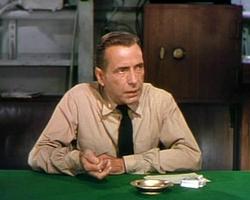Location: Manhattanville College, 2900 Purchase Street, Purchase, NY
Contact Hours:7.5
Time: 9:00-4:30
Cost: $25 (includes lunch)
Click here for registration form
Gone with the Wind defined slavery for generations of Americans. Now we know better. Slavery wasn’t something that simply occurred somewhere else with people we could look down on as morally inferior to the righteous abolitionist North. In recent years scholars have been working more successfully to publicly alter the traditional image of slavery in America by showing it was part and parcel of New York State history for over two centuries. Hear this story. Meet these scholars. Bring back to your classroom a new insight, experience, and contacts on slavery in New York State.
9:00 – Welcome and Program Overview: Peter Feinman, IHARE
9:15 – Traveling the NY African American Experience, Sherrill Wilson, Urban Anthropologist
This slide presentation focuses on the people, places and events that highlight the history of the Africans presence in 17th and 18th century NYC. Enslaved Africans in 18th century NYC made up the 2nd largest group of enslaved people in colonial America, second only to Charleston South Carolina. NYC’s role as a major port was instrumental in this business of selling human beings under both Dutch and British occupation. Locations such as the Slave Market at Wall Street, the National Monument NY African Burial Ground, Seneca Village, and Harlem, USA all document the stories of Africans who helped to build NYC.
Sherrill D Wilson earned a Ph.D. in Urban Anthropology from the New School for Social Research. She is the author of New York City’s African Slave Owners. She lectures and writes on the subject of the African presence in northern colonial era cities. She has lectured at the Smithsonian Institute, Columbia University, the American Museum of Natural History, NY National Monument African Burial Ground and numerous other organizations and institutions, nationwide and internationally.
This lecture, which is free and open to the public, is made possible through the support of the New York Council for the Humanities’ Speakers in the Humanities program.
10:15 – Plantation on the Hudson, Thom Thacker, Site Director, Philipsburg Manor, Union Church, and Kykuit
The talk will provide an overview of enslavement in the colonial North and at Philipsburg Manor. It will present the various ways that Philipsburg Manor has approached the subject with students and the public given the change in the understanding of slavery in New York. Among the topics of discussion regarding the changes in approach at Philipsburg manor will be object-based interpretation, an art contest based on runaway slave advertisements, a boat-building program, dramatic vignettes, and document-based education programs.
Thom Thacker has been with Historic Hudson Valley since 1993. He began his career as a high school history teacher and then served as the Deputy Director for Education and Operations at the American Museum of the Moving Image for over a decade. He holds a BA in Political Economy from The Evergreen State College, a Secondary Social Studies Teaching Certification from the University of Washington, and an MA in Media Studies from the New School.
11:15 – Afro-Dutch Foodways in the Atlantic World. Fred Opie, Marist College
Fred Opie is the Associate Professor of History and Director of the African Diaspora Program at Marist College. He is a news junky who studies transnational movements, ethnicity, foreign relations, labor, and foodways. His first book, Hog and Hominy which is a global look at African American foodways (including the Caribbean and Brazil), that organically developed out of a public lecture he gave and his own love of cooking (and eating). His second book, Black Labor Migration in Caribbean Guatemala, tells the story of a turn of the century frontier region with railroad and banana plantation towns populated by Garifuna, Black Americans, West Indians, and Latin American workers. The book looks at multiple points of black identity in this Afro-Hispanic Diaspora, foreign relations, and Garveyism. His current book project is a study of the inter-ethnic relationships which developed between African Americans and Latinos (Cubans, Puerto Ricans, Panamanians, Dominicans, and others) in metro New York City (inclusive of several Westchester County suburbs). It looks at labor strikes, local politics, and links to international movements in Africa and Latin America.
12:15 – Lunch roundtables – Speakers, historic organization staff, teachers, and general public
1:30 – Slavery, Rebellion, and Revolution: An American Assessment, A,J. Williams-Myers, SUNY New Paltz
The talk will be a succinct look at African resistance to slavery in the Americas. Examples will be drawn from slave theaters within the Americas (includes the United States) along a histroical continuum. Along that continuum will be day-to-day resistance, run aways, conspiracies, rebellions, and finally revolution.
A. J. Williams-Myers holds the Ph.D. in African History from UCLA, and is a professor in Black Studies at SUNY-New Paltz. Among his books are: In Their Own Words: Voices from the Middle Passage; African Dreams to Tell Their Story of Old New York (historical novel); destructive impulses: An Examination of an American Secret in Race Relations – White Violence.
2:30 – Historic organizations – Presentations by historic organizations with connections to slavery
3:30 – Teaching Slavery in New York – Using the information presented today in the classroom and working with historic organizations.
For further information contact IHARE at 914-939-9071 or email us at: contact@ihare.org





